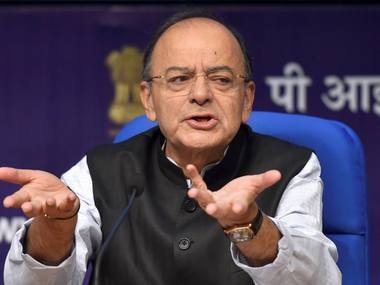The Narendra Modi government’s Rs 9 lakh crore fiscal stimulus package, announced by Union finance minister Arun Jaitley and his team of officials at the finance ministry, is the first major acknowledgement from the government that all is not well in the economy — a change from the narrative advocated by the Bharatiya Janata Party (BJP) top brass and the government so far. This is a good sign. The government finally admits that the growth slowdown isn’t merely ‘technical’ and need deeper surgery. Thus came the package consisting of about Rs 7 lakh crore infrastructure projects and Rs 2.11 lakh crore capital infusion into public sector banks. This is a welcome move, a much-needed one in an economy where growth has slowed considerably quarter after quarter, the banking sector is in peril and jobs are not being generated enough to accommodate millions of new workers. There are two critical parts to Tuesday’s announcement – a massive spending promised on infrastructure to build roads, support small entrepreneurs and an ‘unprecedented’ capital infusion programme announced for the ailing state-run banks that constitute 70 percent of the banking sector. Of these two, the promised infrastructure spending is a clear winner for the economy. The government plans to spend Rs 5.35 lakh crore to build 34,800 kilometres of roads under the Bharatmala programme and another 48,877 kilometres of works under other current schemes by NHAI/MoRTH with an outlay of Rs 1.57 lakh crore. If these investments materialise as planned, it will be a big boost to the economy not only to provide road connectivity to promote business environment, but also to generate a number of new jobs and spur demand for related industries (cement, construction). But a lot will depend on whether the government can manage the funding on time. [caption id=“attachment_4172483” align=“alignleft” width=“380”]  Union Finance Minister Arun Jaitley. PTI[/caption] The plan is to raise Rs 2.09 lakh crore as debt from the market, Rs 1.06 lakh crore of private investments would be mobilised through public-private partnership (PPP) and Rs 2.19 lakh crore is to be provided out of accruals to the Central Road Fund (CRF), toll-operate-transfer (ToT) monetisation proceeds and toll collections of NHAI. The plan looks good on paper but one needs to see if there is enough appetite from investors. Recap bonds So also with the Rs 2.11 lakh crore bank recapitalisation. At the outset, the details (or the lack thereof) look a bit puzzling. Of the Rs 2.11 lakh crore, Rs 1.35 lakh crore is to come from the recapitalisation bonds and the remaining Rs 76,000 crore from the budget allocation and fund raising from the market. Of the Rs 76,000 crore, Rs 18,000 crore is likely to be part of the ongoing captitalisation programme under the Indradhanush plan. Can the banks attract investors to raise funds money from market is a key question. Until now, the experience has not been good. Now, if one looks at the details of the package, there is no clarity yet on the modalities of the recapitalisation bonds. These instruments had been used in early 90s when the banking sector was in a crisis situation. These instruments are not pure equity recapitalisation like in the normal scenario when the government puts money in state-run banks. This is not the best way of recapitalising banks like in the case of pure equity capital infusion. Here, the bonds issued by the government (or any other agency) are bought by banks using their surplus cash and the government uses the same money to recapitalise these banks. So, there is no fresh cash flow coming from outside. Banks are essentially funding themselves using their surplus cash. This is a good way of recaptalising banks without putting much burden to the exchequer. Fiscally constrained governments world over have used unconventional instruments such as recap bonds to feed capital to their banks. Clarity is needed on a few issues here. First, what will be the nature of these bonds at redemption? If these bonds are converted into equity at the end of the tenure, the government holding in state-run banks will go up further contrary to the plan to reduce the holding. Second, will these bonds be part of the government debt? During the presser on Tuesday, there was no clarity on this. Internationally, these instruments are not counted as part of the government debt but in the Indian system it may not be so. If that is the case, this will have a notable impact on the government’s fiscal deficit. Third, what about the interest costs of these bonds? If the government is the issuing agency, it will have to pay the interest. According to C hief Economic Advisor (CEA) Arvind Subramanian, the interest burden on the government would be about Rs 9,000 crore. The CEA is optimistic that this cost can be offset by the resultant increase in economic activities and private investments. But, that is an expectation while the immediate costs are real. One needs to wait for more details of the recapitalisation bonds to understand the full implications. More importantly, the government will have to immediately follow up on the capitalisation programme to bring in structural reforms in the banking sector. This can be done only by way of bringing in accountability and professionalism in their lending operations. The main reason why banks are sitting on large pile of corporate bad loans is years of careless lending and vulnerability to politically connected promoters. These loans have come back to hound banks now. Unless this situation changes even the fresh capital infusion would go the same way. In fact, much of the fresh capital infusion will have to be used to repair the cracked balance sheets hit by bad loans. If the recovery from defaulters is not followed up simultaneously, in effect, the taxpayer’s money is being used to compensate banks. The Modi government has done well to finally acknowledge the problem in the economy and acting to offer the much-needed economic stimulus. It will take a while before the economy recovers from the shock of demonetisation and the GST implementation. But the roots of the current phase of economic slowdown run a lot deeper. Along with proper implementation of the economic stimulus, if the government initiates other structural reforms in the economy such as land and labor reforms, the economy can get back to the growth trajectory with a lag.
If the recovery from defaulters is not followed up simultaneously, in effect, the taxpayer’s money is being used to compensate banks
Advertisement
End of Article


)




